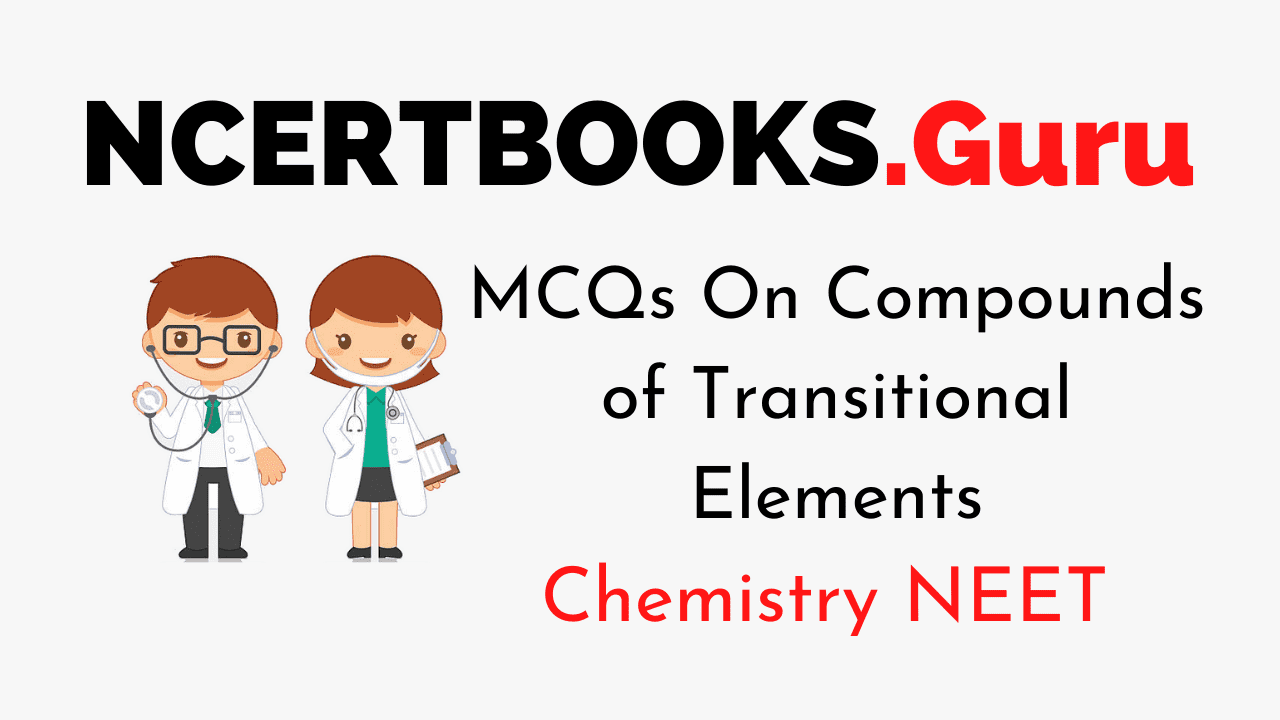NEET Chemistry is the scoring paper in the medical entrance examination. Here, you will discover the NEET Chemistry MCQ Questions for all Concepts as per the latest syllabus. Practice more on a regular basis with these NEET Chemistry objective questions on air pollution and improve your subject knowledge & problem-solving skills along with time management. NEET Chemistry Compounds of Transitional Elements Multiple Choice Questions make you feel confident in answering the question in the exam & increases your scores to high.
MCQs on Compounds of Transitional Elements
1. The 3d transition series contains elements having an atomic number from
(a) 21 to 30
(b) 21 to 31
(c) 22 to 30
(d) 21 to 29
Answer
Answer: (a)
2. The first transition element is
(a) copper
(b) nickel
(c) scandium
(d) vanadium
Answer
Answer: (c)
3. Transition metals are generally coloured because
(a) they absorb electromagnetic radiations
(b) their penultimate d-subshells are fully filled
(c) of d-d transition
(d) none of the above
Answer
Answer: (c)
4. Atomic radii of d-block elements in a series
(a) decreases with increase in atomic number
(b) increases with increase in atomic number
(c) remains constant
(d) none of the above
Answer
Answer: (a)
5. Formation of interstitial compounds makes the transition metals more
(a) soft
(b) ductile
(c) malleable
(d) none of the above
Answer
Answer: (d)
6. Paramagnetism is common in
(a) s-block elements
(b) p-block elements
(c) d-block elements
(d) any of them
Answer
Answer: (c)
7. Transition metals are complexes act as
(a) Lewis acid
(b) Lewis base
(c) Neutral
(d) none of the above
Answer
Answer: (a)
8. Transition elements exhibit variable valency because they release electrons from
(a) ns orbitals
(b) np orbitals
(c) (n-1)d orbitals
(d) (n-1)d & ns orbitals
Answer
Answer: (c)
9. The density of transition metals in a series
(a) decreases gradually
(b) increases gradually
(c) remains constant
(d) may increase or decrease
Answer
Answer: (b)
10. In industrial processes, transition elements and their oxides are used as
(a) surfactants
(b) insecticides
(c) catalyst
(d) any of them
Answer
Answer: (c)
